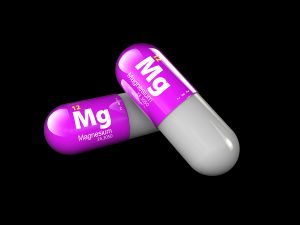Dr. Kurt Hong, professor of clinical medicine spoke about clinical applications of the fasting mimicking diet in Las Vegas. This was at the 27th Annual World Congress on Anti-Aging Medicine on Dec. 14, 2019. Although he spoke on various forms of fasting, he concluded that the fasting mimicking diet had the best results and was most consumer-friendly.
How we age
Dr. Hong reviewed the processes of aging. We age, because our cells experience oxidative damage and our telomeres (the end caps of our chromosomes) get shorter in time. We also age, because there are genetic mutations in our cells’ DNA and our mitochondria are aging as well. The mitochondria are the small energy packages inside the cells that give us energy. When people age, they have lost mitochondria, there is less energy that the body makes out of food and we feel chronically tired.
Above the age of 65 we are also likely to develop diseases of various organs:
- Heart disease: 31%
- Cancer: 24%
- Chronic lung disease (lower respiratory disease): 21%
- Alzheimer’s disease: 13%
- Diabetes: 11%
Women are generally healthier than men and their life expectation is 4 to 5 years longer than that of men.
Cellular and molecular aging
Longevity researchers have done mouse experiments and human clinical trials for decades. Dr. Hong asked the question: how much longer could humans live, if we could cure cancer, heart disease, stroke and diabetes? The answer is: 13 years. But if we transfer the animal data to humans it should be 30 years of longer life. Why is there such a discrepancy? The answer is that it is easy to force good lifestyles onto animals, but humans are resistant to changes. Humans have their habits; they like to continue to smoke and eat fast food instead of switching to a healthier Mediterranean diet. Humans also resist a regular exercise program. And they do not want to hear that they should replace missing hormones with bioidentical ones. The result is that we humans will prolong our lives only by less than 50% of what we could achieve.
The concept of intermittent fasting
Dr. Hong stated, that ten thousand years ago, people did not always have enough food to eat. They were forced to intermittently fast. That did not mean that they had long life expectancies, as there was no cure for any disease. But one fact was true: the body learnt to rejuvenate itself during periods of fasting. And these longevity genes are still present in our genes. But they will only help us when we actually fast for some periods of time.
Dr. Hong reviewed what kind of fasting methods are available.
Prolonged fasting and juice fasting are not among the options. With prolonged fasting electrolyte disturbances become an issue. Juice fasting does not remove enough calories and nutrients. This, however is needed to allow the body to stimulate the longevity genes.
How fasting diets work
Dr. Hong explained that there are essentially 5 fasting diets that are effective in regulating the key nutrient sensitive pathways of IGF-1, TOR and PKA. This increases cellular protection and maintenance. It also increases activation of stress resistance pathways and removes and replaces damaged and dysfunctional cells. Finally, a fasting diet also reduces inflammation, which is often the start of disease.
A review of the 5 fasting diets
Time-restricted eating (TRE)
With TRE the person fasts for 12 to 16 hours every day. The person restricts the daily food consumption to a 4- to 12-hour window. The disadvantage is that this fast is done every day. The period of fasting may not be long enough to change the metabolism, where the above-mentioned effects take place.
Alternate-day fasting
This is a 24-hour fast every other day with a 1:1 day eating-fasting cycle. This does not appear to be physiological and is disruptive with regard to social activities.
5:2 intermittent fasting
With this fast you fast for 2 days every week. With this 2:5 eating-fasting cycle the person fasts for 2 days every week; the other 5 days you eat as much as you desire.
Although this is effective, it can be quite disruptive to your lifestyle.
Periodic fasting
You fast for 48 to 72 hours every couple of months. This fast is socially more acceptable. It is not that often, just a couple of times in a year. The question remains whether it is effective in changing the metabolism to trigger the effects mentioned above.
Fasting-mimicking diet (FMD)
The original suggestion by Dr. Longo, the inventor of the FMD was that you should fast for 5 days once every month. Since then he has modified it and said that you can achieve similar metabolic changes, if you only fast for 3 days and do this a couple of times per year. I have done the FMD since December 2017 and I adhere to the original schedule of doing the FMD monthly for 5 days. This has provided me with more energy. It is easier to keep my body mass index in the 21.0 to 22.0 range. Dr. Hong explained that the FMD allows you to eat, but it tricks the body into acting like you are fasting. Because you are eating 500 to 600 calories per day, you are getting some fluid and nutrients, so the hunger pangs are tolerable.
More details about the FMD
Here is Dr. Hong’s summary about the FMD: “The stomach sees food, while the cells see fasting”. Dr. Hong said that the FMD is the most user-friendly method of fasting. It also has had the most scientific studies to validate that it is indeed working. Poorly functioning mitochondria and misfolded proteins are removed by a process of phagocytosis. The FMD reduces heart disease, cancer, and neurodegenerative disorders. Stem cell production also gets a boost. This promotes cell regeneration and reduces risk factors of premature aging.
Publication on the effectiveness of the FMD
A publication came out in 2017 reporting about the findings of a clinical trial regarding the FMD.
Researchers followed markers of aging, diabetes, cancer and cardiovascular disease in 100 volunteers. They underwent a FMD for 5 days on 3 consecutive months. The results were astounding. The body mass index, the fasting blood sugar level, triglycerides, total and LDL cholesterol and the CRP were all lower. CRP stands for C-reactive protein, which measures the degree of inflammation in the body. The blood pressure was also lower. Overall the 5-day FMD was a safe method with no side effects. The FMD reduced markers and risk factors of aging and age-related diseases. In doing so it prolongs life by reducing the likelihood of coming down with disease.
Who should abstain from fasting?
Dr. Hong mentioned that the FMD is not for everybody. Pregnant women should refrain from going on it, also type 1 and type 2 insulin dependent diabetics. Anybody who has a sign of an active infection (coughing, having a fever or diarrhea) should be excluded. Other exclusions are people who are underweight (BMI less than 18.5) or are malnourished (protein deficiency). Patients with heart failure and advanced kidney or liver disease should not take part in a fasting program.
Autoimmune diseases and FMD
The myelin sheath around the axon of nerve cells in the central nervous system are supported by oligodendrocytes. In multiple sclerosis (MS) patients T lymphocytes activate macrophages and B cells to produce autoantibodies. They destroy oligodendrocytes breaking down the insulating barrier of the myelin sheath. In MS patients the broken-down myelin sheath suppresses the electrical impulses transmitted through the nerve fibers. The FMD led to clinical improvements.
In a pilot study intermittent fasting changed the gut flora into a healthier flora.
This triggered the immune system in the gut to make less inflammatory T cells producing the IL-17 cytokines. There was also an increase in regulatory T helper cells.
Inflammatory bowel disease (IBM) can be improved with several courses of FMD. As the authors showed, intestinal inflammation improved with FMD. The intestinal gut flora improved with the FMD and it promoted intestinal regeneration.
Reversal of physical and functional decline
The fasting mimicking diet (FMD) has a variety of effects on the human body. Dr. Hong showed a slide where we could see that ketone bodies, cortisol and ghrelin levels are increased in the blood. At the same time glucose, insulin, leptin and IGF-1 levels are reduced. In addition, triglycerides and LDL levels are getting lower. Inflammatory markers including the C-reactive protein (CRP) are reduced as well.
Effects of the FMD on various organs in the body
A look at all of the organs shows that in the liver the ketone body production and insulin sensitivity are up. Glycogen production in the liver as well as the liver size are down.
The intestines produce ketone bodies. In the skeletal muscles the insulin sensitivity is increased, while the muscle structure and function are improved. In the brain the hunger feeling increases the release of neurotropic factors including the neuropeptide Y. Cognitive function and stress resistance increase with the FMD. The FMD reduces inflammation and oxidative stress in the brain. With respect to the cardiovascular system the heart rate drops down and blood pressure gets lower. The insulin production in the pancreas is reduced.
Fatty tissue
In fatty tissue lipolysis is up and also the production of adiponectin. This is a protein hormone involved in glucose and fatty acid metabolism. Insulin sensitivity with the FMD is also increased. On the other hand, the FMD reduces fat mass, leptin production and inflammation.
The FMD is the solution to preventing disease and prolonging your life
All of these effects lead to a reversal of physiologic and functional declines. Age-related metabolic diseases like type 2 diabetes are postponed or eliminated. The FMD prevents neuro-cognitive decline like Alzheimer’s disease. In addition, the risk of developing cancer is getting lower. In summary, the FMD improves the health-span, quality of life and can prepare you for a long life.
Conclusion
Dr. Kurt Hong is a professor of clinical medicine at UCLA. He gave a talk at the 27th Annual World Congress on Anti-Aging Medicine in Las Vegas on Dec. 14, 2019. He discussed what we could do to help patients with various autoimmune diseases like multiple sclerosis, rheumatoid arthritis and inflammatory bowel disease. It turns out that the fasting mimicking diet (FMD) is the best solution to reduce inflammation and modify the autoimmune response from aggressive T lymphocytes. With the FMD you consume only 500 to 600 calories per day for 5 days every month. The rest of the days of the month you eat a healthy Mediterranean-type diet.
Fasting mimicking diet, the best way to treat autoimmune diseases
Dr. Hong explained in detail what cellular mechanisms are at work to achieve the modification of the immune system in autoimmune diseases. The FMD is also the solution to slow down aging in healthy people. Dr. Hong discussed clinical applications of the fasting mimicking diet fort autoimmune diseases. It is easier to prevent disease than it is to cure an illness. The FMD is an easier way, because you don’t fast completely, you only reduce your food intake to the bare minimum, but your body “thinks” that you are fasting.
Ultimately, this approach does take some effort, and it does take time to familiarize yourself with it. If patients do it for the first time, they will experience some hunger, the first and second day tend to be a hurdle! Once you make it part of a health routine on a regular basis, it is a lot easier.















